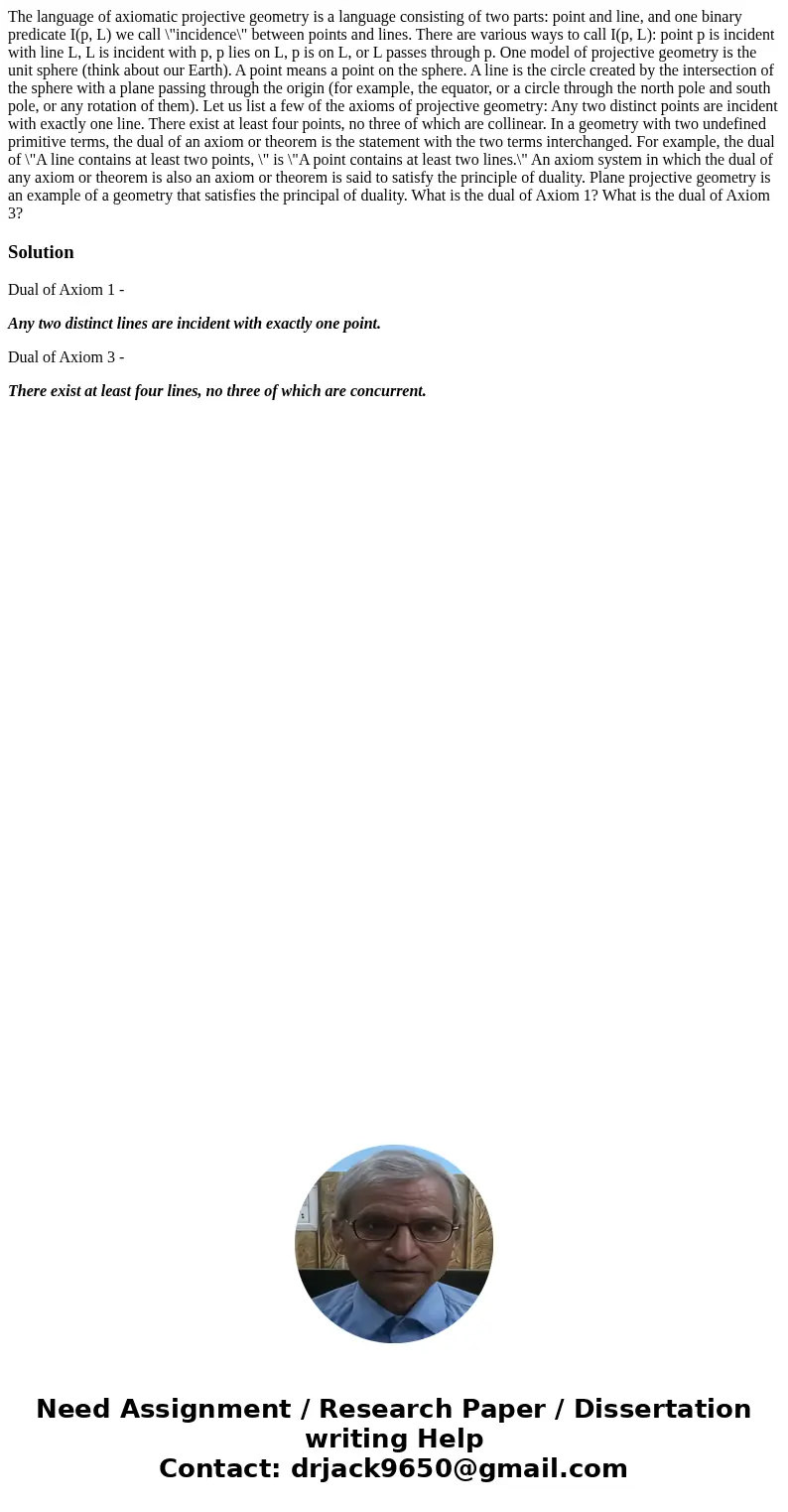The language of axiomatic projective geometry is a language
The language of axiomatic projective geometry is a language consisting of two parts: point and line, and one binary predicate I(p, L) we call \"incidence\" between points and lines. There are various ways to call I(p, L): point p is incident with line L, L is incident with p, p lies on L, p is on L, or L passes through p. One model of projective geometry is the unit sphere (think about our Earth). A point means a point on the sphere. A line is the circle created by the intersection of the sphere with a plane passing through the origin (for example, the equator, or a circle through the north pole and south pole, or any rotation of them). Let us list a few of the axioms of projective geometry: Any two distinct points are incident with exactly one line. There exist at least four points, no three of which are collinear. In a geometry with two undefined primitive terms, the dual of an axiom or theorem is the statement with the two terms interchanged. For example, the dual of \"A line contains at least two points, \" is \"A point contains at least two lines.\" An axiom system in which the dual of any axiom or theorem is also an axiom or theorem is said to satisfy the principle of duality. Plane projective geometry is an example of a geometry that satisfies the principal of duality. What is the dual of Axiom 1? What is the dual of Axiom 3?
Solution
Dual of Axiom 1 -
Any two distinct lines are incident with exactly one point.
Dual of Axiom 3 -
There exist at least four lines, no three of which are concurrent.

 Homework Sourse
Homework Sourse